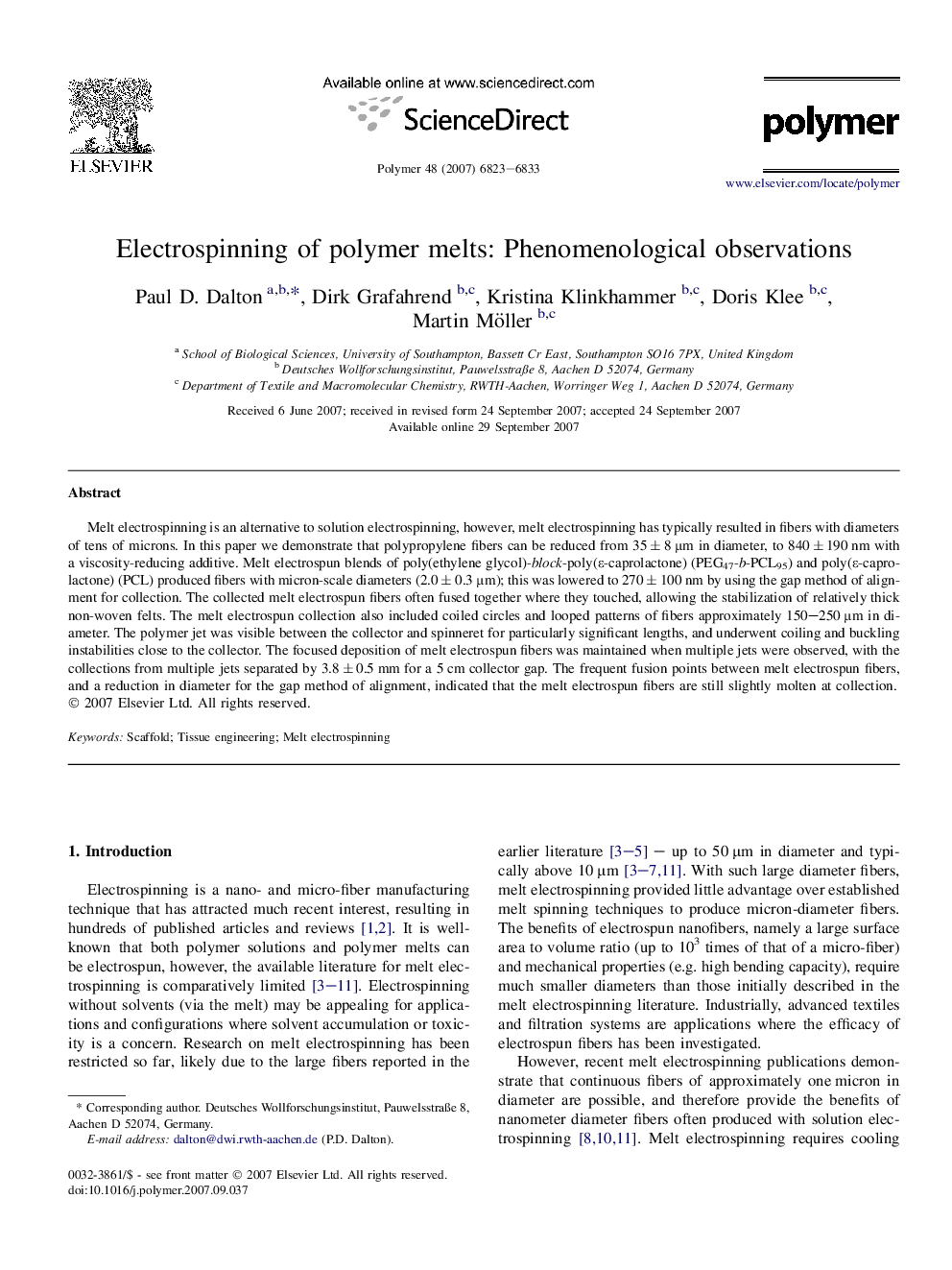| Article ID | Journal | Published Year | Pages | File Type |
|---|---|---|---|---|
| 5187764 | Polymer | 2007 | 11 Pages |
Melt electrospinning is an alternative to solution electrospinning, however, melt electrospinning has typically resulted in fibers with diameters of tens of microns. In this paper we demonstrate that polypropylene fibers can be reduced from 35 ± 8 μm in diameter, to 840 ± 190 nm with a viscosity-reducing additive. Melt electrospun blends of poly(ethylene glycol)-block-poly(É-caprolactone) (PEG47-b-PCL95) and poly(É-caprolactone) (PCL) produced fibers with micron-scale diameters (2.0 ± 0.3 μm); this was lowered to 270 ± 100 nm by using the gap method of alignment for collection. The collected melt electrospun fibers often fused together where they touched, allowing the stabilization of relatively thick non-woven felts. The melt electrospun collection also included coiled circles and looped patterns of fibers approximately 150-250 μm in diameter. The polymer jet was visible between the collector and spinneret for particularly significant lengths, and underwent coiling and buckling instabilities close to the collector. The focused deposition of melt electrospun fibers was maintained when multiple jets were observed, with the collections from multiple jets separated by 3.8 ± 0.5 mm for a 5 cm collector gap. The frequent fusion points between melt electrospun fibers, and a reduction in diameter for the gap method of alignment, indicated that the melt electrospun fibers are still slightly molten at collection.
